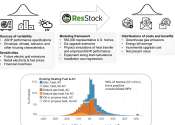Supramolecule combination of fullerene and metalloporphyrin improves zinc-air battery function
Zinc-air batteries are an inexpensive, powerful battery alternative that can be used on a small scale to power electronics or on a large scale for electric vehicles or energy storage. These batteries work when oxygen from ...
Feb 27, 2024
0
4









